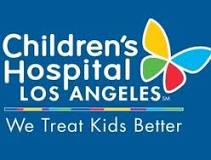Typology of Adherence in Adolescents: Phase II
| Status: | Completed |
|---|---|
| Conditions: | HIV / AIDS |
| Therapuetic Areas: | Immunology / Infectious Diseases |
| Healthy: | No |
| Age Range: | 12 - 24 |
| Updated: | 4/21/2016 |
| Start Date: | June 2004 |
| End Date: | April 2005 |
A number of factors influence HIV-positive adolescents' acceptance of and willingness to
continue taking anti-HIV medicines. These factors include mental health and substance abuse
issues, barriers such as lack of medical insurance, and cognitive-behavioral barriers (such
as a person's impression of the impact of the medicines on his/her health and a person's
sense of his/her ability to continue taking the medications prescribed). The purpose of this
study is to use a survey to determine how common specific barriers are that prevent HIV
positive adolescents from taking their anti-HIV medicines and if those barriers cluster
together. The information collected will be used to develop and validate a schema for
classifying HIV medication adherence by barriers to adherence or clusters of barriers to
adherence. This classification schema could then be used in the development of interventions
that better meet the needs of HIV-infected youth.
continue taking anti-HIV medicines. These factors include mental health and substance abuse
issues, barriers such as lack of medical insurance, and cognitive-behavioral barriers (such
as a person's impression of the impact of the medicines on his/her health and a person's
sense of his/her ability to continue taking the medications prescribed). The purpose of this
study is to use a survey to determine how common specific barriers are that prevent HIV
positive adolescents from taking their anti-HIV medicines and if those barriers cluster
together. The information collected will be used to develop and validate a schema for
classifying HIV medication adherence by barriers to adherence or clusters of barriers to
adherence. This classification schema could then be used in the development of interventions
that better meet the needs of HIV-infected youth.
As more HIV-infected adolescents are identified and linked into care, the dyad of medication
and medication adherence continues to be an issue for both the provider and the patients.
Thus, developing a strategy to assess adherence and barriers to adherence in this population
is integral so that interventions can be targeted towards adolescents' specific needs. Our
operating premise is that the issue of drug adherence is multi-factorial and that
interventions that combine a variety of modalities may be preferred. However, before such
interventions can be developed, we must first develop a tool that can be used to assess
medication adherence and to identify barriers to medication adherence in this population.
This is a cross-sectional survey designed to assess the most prevalent combination of
barriers to HIV medication adherence in adolescents. Specific barriers focused on in this
study include mental health disorders, substance abuse, and cognitive-behavioral and
structural barriers. In this Phase II study, the Adherence Staging Algorithm and the
Participant Assessment Tool, pilot tested and modified based on findings from Phase I of the
study, will be used to determine the prevalence of the specific barriers to adherence among
HIV-infected youth requiring antiretroviral medication and the most common clusters of
specific barriers. A cognitive-behavioral barriers schema for classifying HIV medication
adherence in adolescents will be developed and validated.
The study consists of a one-time visit with a face-to-face interview to complete two
questionnaires: the Adherence Staging Algorithm to classify the subject's adherence to
his/her prescribed medications, and the Participant Assessment Tool to assess the prevalence
of barriers to adherence that the subjects may have experienced. The interview takes no more
than 30 minutes. In addition, the patient's medical record will be reviewed for HIV-related
clinical data such as viral load, CD4, history of medications prescribed, and barriers the
patient may have experienced such as mental health or substance abuse problems.
and medication adherence continues to be an issue for both the provider and the patients.
Thus, developing a strategy to assess adherence and barriers to adherence in this population
is integral so that interventions can be targeted towards adolescents' specific needs. Our
operating premise is that the issue of drug adherence is multi-factorial and that
interventions that combine a variety of modalities may be preferred. However, before such
interventions can be developed, we must first develop a tool that can be used to assess
medication adherence and to identify barriers to medication adherence in this population.
This is a cross-sectional survey designed to assess the most prevalent combination of
barriers to HIV medication adherence in adolescents. Specific barriers focused on in this
study include mental health disorders, substance abuse, and cognitive-behavioral and
structural barriers. In this Phase II study, the Adherence Staging Algorithm and the
Participant Assessment Tool, pilot tested and modified based on findings from Phase I of the
study, will be used to determine the prevalence of the specific barriers to adherence among
HIV-infected youth requiring antiretroviral medication and the most common clusters of
specific barriers. A cognitive-behavioral barriers schema for classifying HIV medication
adherence in adolescents will be developed and validated.
The study consists of a one-time visit with a face-to-face interview to complete two
questionnaires: the Adherence Staging Algorithm to classify the subject's adherence to
his/her prescribed medications, and the Participant Assessment Tool to assess the prevalence
of barriers to adherence that the subjects may have experienced. The interview takes no more
than 30 minutes. In addition, the patient's medical record will be reviewed for HIV-related
clinical data such as viral load, CD4, history of medications prescribed, and barriers the
patient may have experienced such as mental health or substance abuse problems.
Inclusion Criteria:
- Between the ages of 12 years and 24 years
- Eligible for ART (antiretroviral therapy) based on US Public Health Service
guidelines
- Have been offered and/or prescribed HAART (highly active antiretroviral therapy)
- Ability to give informed consent or assent with parental permission, where required
Exclusion Criteria:
- Infected with HIV but do not require ART
- Started HAART but stopped due to medical reasons, (e.g., change in medication
guidelines, toxicity, resistance, etc.)
- Females prescribed/receiving HAART for the purpose of preventing mother-to-child
transmission
We found this trial at
17
sites
Johns Hopkins Hospital Patients are the focus of everything we do at The Johns Hopkins...
Click here to add this to my saved trials
Montefiore Medical Center As the academic medical center and University Hospital for Albert Einstein College...
Click here to add this to my saved trials
Click here to add this to my saved trials
Childrens Hospital Los Angeles Children's Hospital Los Angeles is a 501(c)(3) nonprofit hospital for pediatric...
Click here to add this to my saved trials
University of Miami A private research university with more than 15,000 students from around the...
Click here to add this to my saved trials
Children's Hospital of Philadelphia Since its start in 1855 as the nation's first hospital devoted...
Click here to add this to my saved trials
University of South Florida The University of South Florida is a high-impact, global research university...
Click here to add this to my saved trials
Click here to add this to my saved trials
Click here to add this to my saved trials
Click here to add this to my saved trials
Click here to add this to my saved trials
New York City, New York 10021
Click here to add this to my saved trials
Click here to add this to my saved trials
Click here to add this to my saved trials
Click here to add this to my saved trials
Click here to add this to my saved trials
111 Michigan Ave NW
Washington, District of Columbia
Washington, District of Columbia
(202) 476-5000

Childrens National Medical Center As the nation’s children’s hospital, the mission of Children’s National Medical...
Click here to add this to my saved trials





